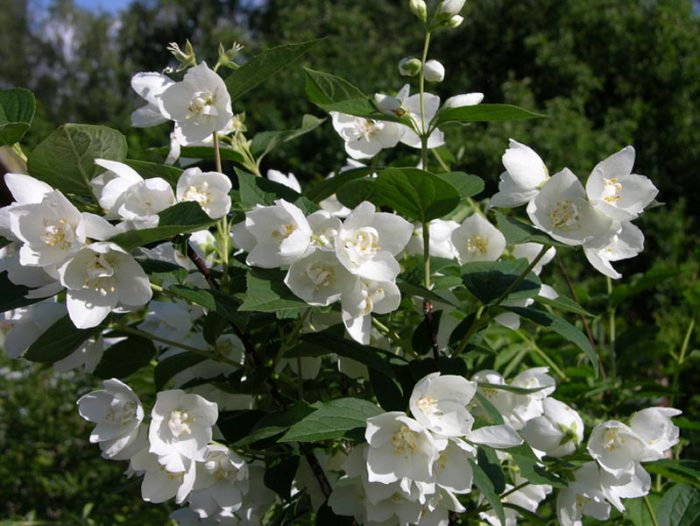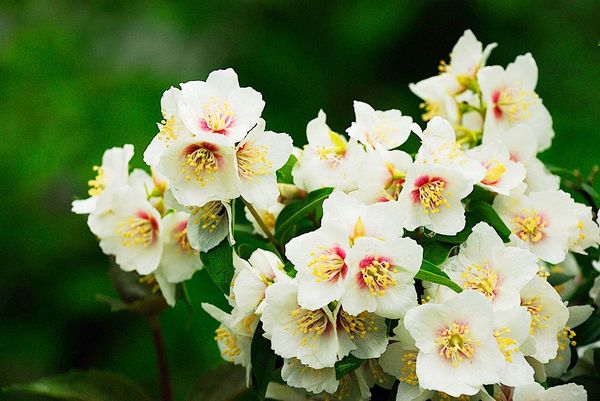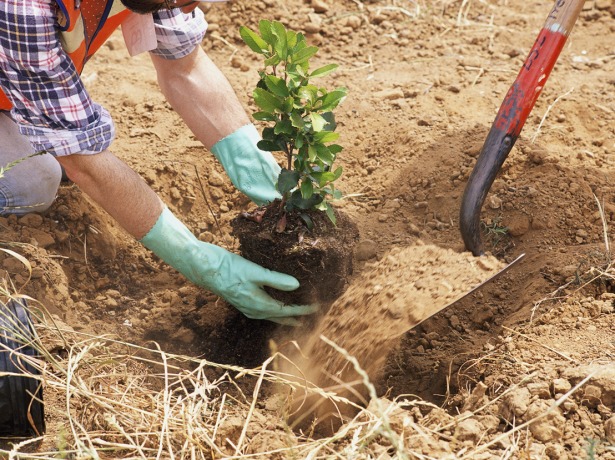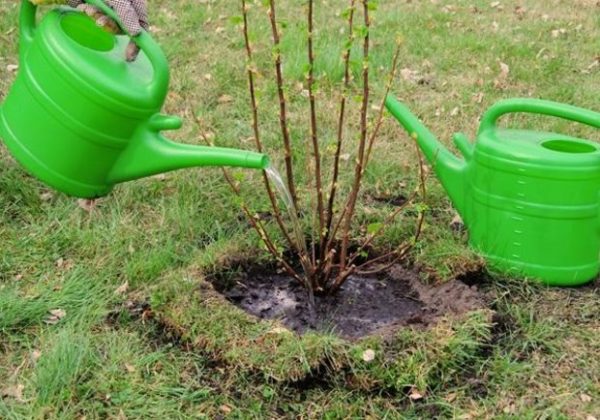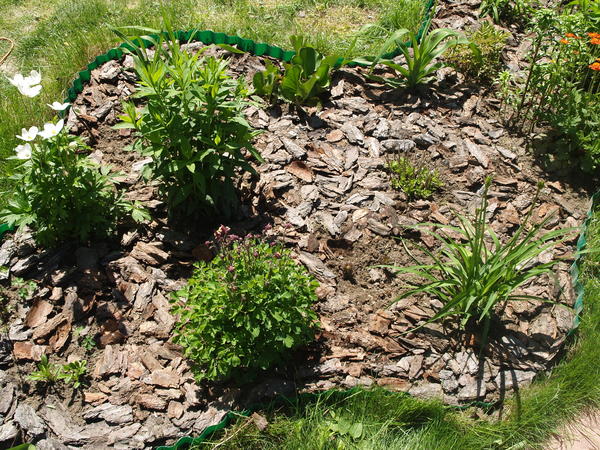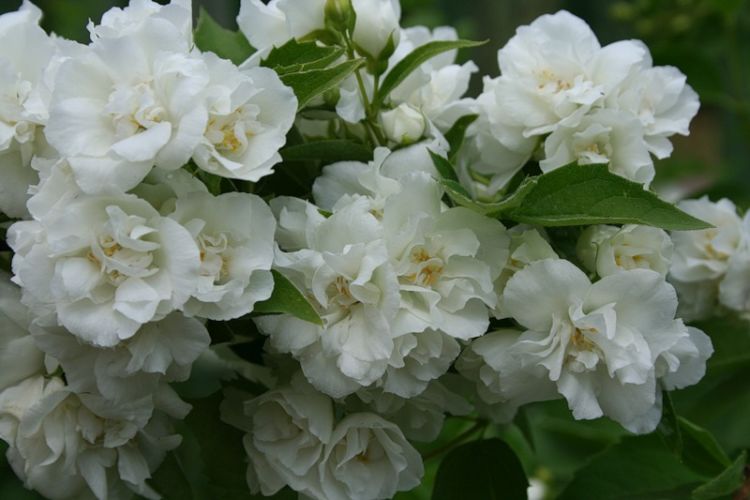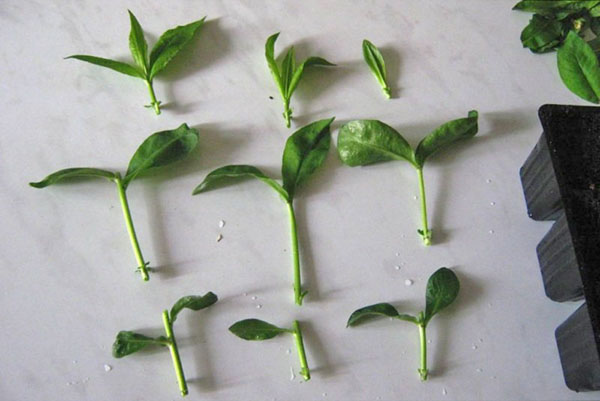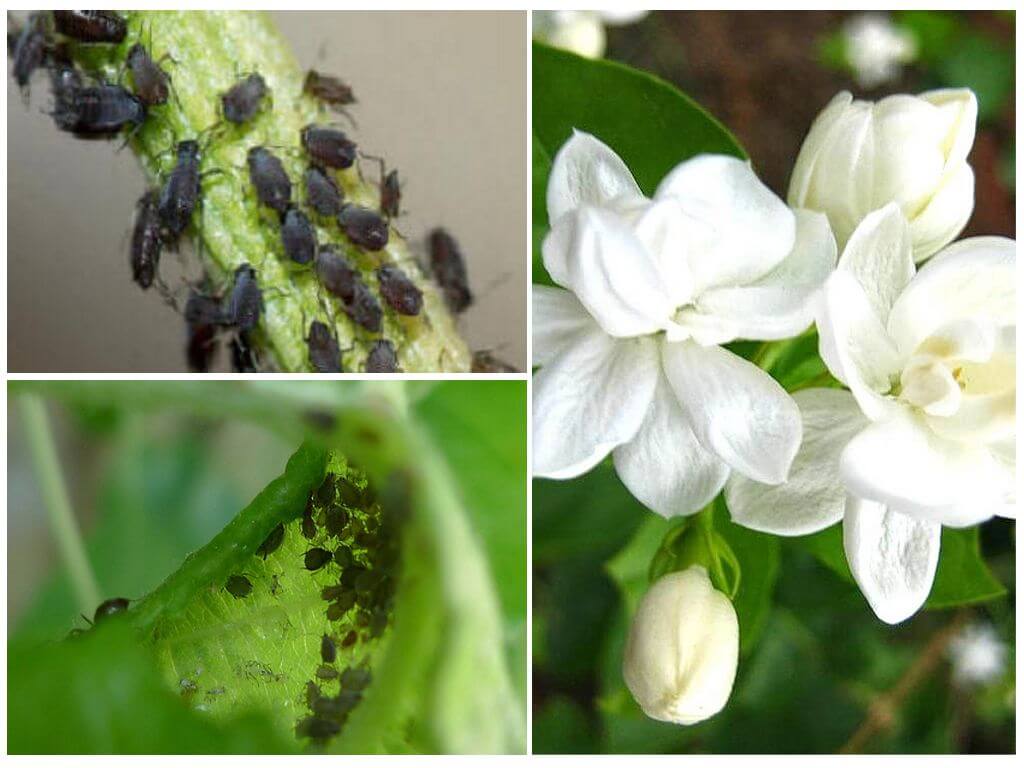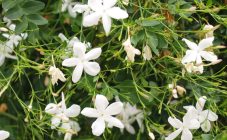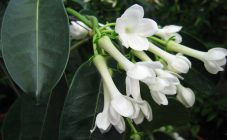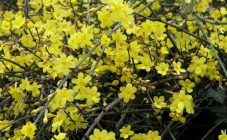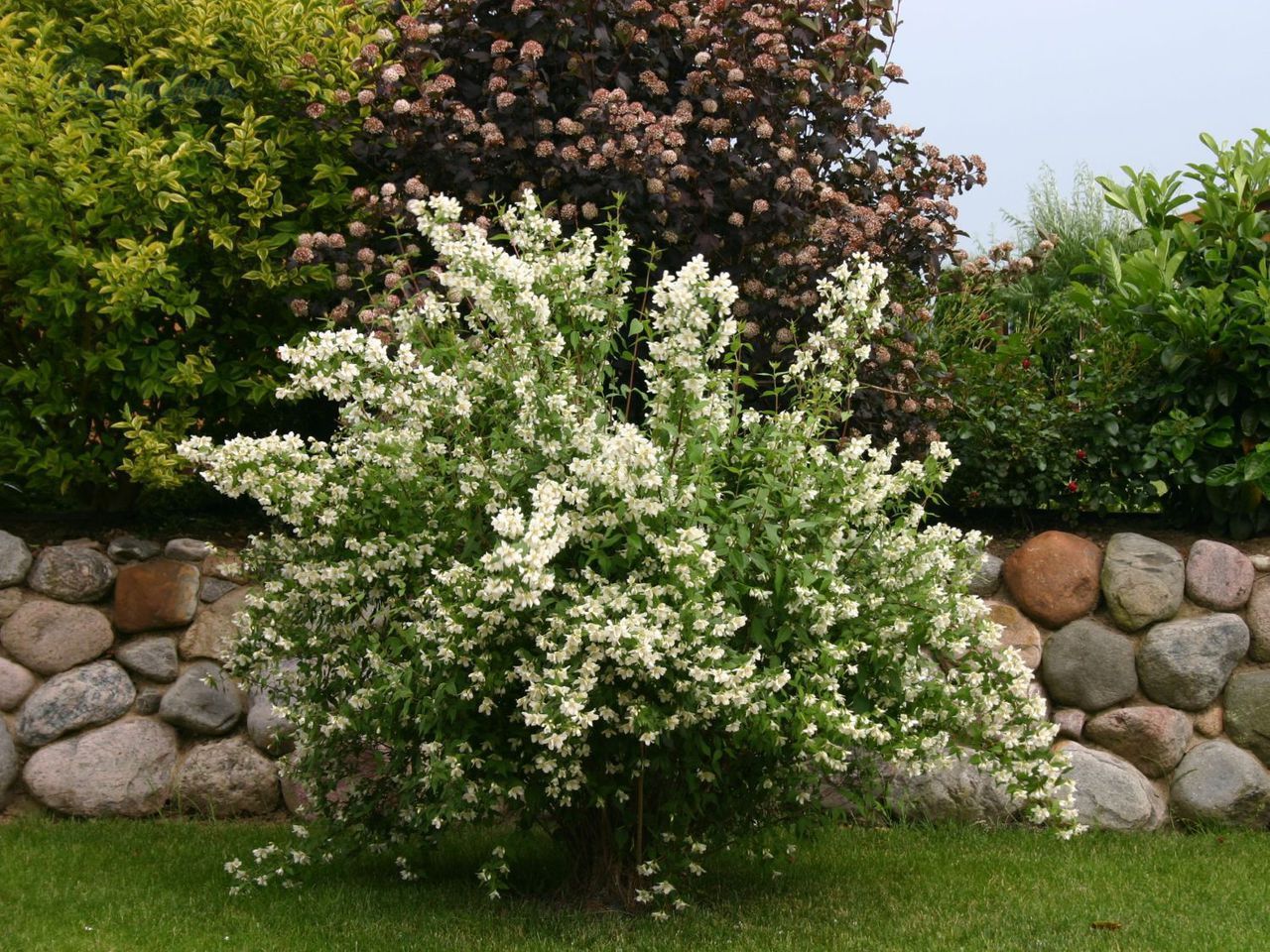Content:
A jasmine bush planted in a summer cottage not only looks attractive, but also endows its owners with an amazing aroma of delicate flowers. The popular name of the plant is chubushnik. Jasmine (Philadelphus) has long been used by humans and for applied purposes. Its wood was used for the manufacture of smoking pipes, flutes, pipes. Today it is a purely ornamental plant, often used in landscape design. Caring for jasmine in the country is not difficult, but still necessary.
Description of the shrub and features of its cultivation
Garden jasmine belongs to the Hortensiev family. With real jasmine, a representative of the Olive family, it is only related to the abundance of snow-white flowers with a similar aroma. The height of this deciduous shrub varies by cultivar and can vary from 70 cm (in miniature varieties) to 6 m. Its long, straight branches are covered with gray bark. The leaves are ovoid and are 2 to 7 cm long. Inflorescences racemose, consisting of simple semi-double or double flowers.
There are different types and varieties of jasmine. It is better to choose for planting those of them that are easily adaptable to the climate where they are to be grown. In Russia, the following types are most popular:
- common jasmine;
- garden curly jasmine;
- jasmine crown;
- dwarf jasmine;
- jasmine madagascar (indoor).
In addition to the Madagascar look, the houses often grow a jasmine-like gardenia that blooms with fragrant white flowers.
The intensity of the aroma depends on the specific type of chubushnik. Some varieties smell faintly, while others exude a strong sweetish aroma. There are shrubs with a berry smell. For example, jasmine of the Strawberry variety, during flowering, emits the aroma of the berry of the same name.
For those who decide to plant jasmine, care and cultivation of this crop in the garden will not bring any special worries. Experts recommend planting several varieties of chubushnik with different flowering periods on the site at once. In this case, it does not matter when the jasmine blooms, in what month, since clouds of white petals will decorate the site from June to August.
Jasmine: how to plant and care
If the summer resident has decided to plant jasmine, the bush can be rooted both in spring and autumn. According to experts, an autumn planting is preferable. The place does not have to be sunny, the chubushnik tolerates shading well. He also does not impose special requirements on the composition of the soil. The shrub can easily tolerate drought, but flowering in this case will be weak.
If you plant jasmine in a well-lit fertile area and regularly moisturize it, the flowers will bloom one after another, resembling a lush cloud with their snow-white mass. For planting, it is better to choose a clear, windless day in late September or early October. It is recommended to lay a drainage layer 15 cm thick at the bottom of the planting pit with a diameter and depth of 50 cm, and on top of a mixture consisting of the following components:
- 3 pieces of leafy land;
- 2 parts of humus;
- 1 part sand;
- 30 g of complex granular fertilizer.
When planting, the root collar must not be buried more than 3 cm, otherwise the trunk may rot. The ground near the bush is slightly compacted. After planting, a small groove is dug around the seedling for further watering. Immediately after that, 2 buckets of water should be poured under the root in small portions.
If several specimens of jasmine are planted at once, a distance of 1.5 m is maintained between them.When planting a plant as a hedge, the interval is reduced to 50-80 cm.
Plant transplant
If at first the jasmine grew in a pot like a homemade one, you can transplant it into open ground at any time. It is better to transplant from one place of the site to another in the fall, at the beginning or in the middle of October. In summer, during flowering, it is better not to transplant the shrub, since the plant gives all its strength to the formation of flowers and will not be able to adapt normally.
At the bottom of the pit, 1.5 kg of rotted manure mixed with fertile soil is pre-laid. Ash or superphosphate can also be used as top dressing. Further, the procedure is the same as when planting a seedling with an open root system. Transplanted young plants easily take root in a new place.
Follow-up care
How to care for jasmine in the garden after planting? So that moisture from the ground does not evaporate too quickly, the soil after planting must be mulched with garden soil, peat, humus. It is recommended to cut the aerial part of the bush, leaving 4-6 buds on each shoot. This technique allows the plant to take root better and form a more lush crown in the future. If the land was well fertilized when planting, the next top dressing is done no earlier than 2 years later. The plant has enough supply of nutrients for this period.
Jasmine is a garden, cultivated plant, and for active growth in the future it needs feeding. It is recommended to apply fertilizers under the jasmine bush twice a season - in early spring and after flowering. Nitrogen should prevail in spring dressings, and in summer it is recommended to feed jasmine with fertilizers with phosphorus and potassium. Chubushnik is irrigated in hot dry weather. The rest of the time, he has enough moisture, which comes from precipitation and morning dew. After the last rain, the soil under the bush must be loosened.
If the leaves of the plant curl, most likely the cause is a lack of moisture. During drought, it is recommended to pour 3-4 buckets of water under the bush every 2-3 days. During flowering, watering is carried out more often. The consequence of dry autumn may be an insufficient moisture reserve of the plant for the winter. In this case, it is recommended to make water charging irrigation. Any summer resident should understand that a jasmine bush, planting and caring for which is not so difficult, will actively grow and bloom if everything was done according to the rules.
Reproduction methods
How to grow jasmine from scratch? For propagation of a shrub, seeds, cuttings and layering are often used. These methods are considered the most effective for obtaining new copies of the mock-orange:
- Reproduction by layering is a simple, convenient and fast way. For this, all young growth is removed in the spring in order to stimulate the regrowth of strong, powerful shoots. Then one of these branches is selected, bent to the ground and placed in a previously dug groove. From above, the shoot is sprinkled with a mixture of sand and peat.After about 1.5 months, young shoots will begin to form, and in the fall, small bushes are separated and planted in a new place.
- Cuttings are obtained after pruning the bush in June. At this time of the year, the planting material is of the highest quality. It is best to plant cuttings at home. Shoot tips about 10 cm long are rooted in a container with light nutritious soil. Cuttings are planted at an angle of 40 °, covered with glass or foil and placed in the most illuminated place. Spray them daily. The appearance of an increase will indicate that rooting was successful. The first time after planting in open ground, young plants need shelter.
- Seed breeding is more often used for breeding work. Sowing is carried out at the very beginning of winter, before severe frosts. The seeds are slightly buried in the soil, after which a shelter of spruce branches is built on top. The seedlings that appeared in the spring grow healthy and hardened, but they will have to wait 7-8 years for their flowering.
Before the plant blooms, the young mock-orange is only watered, loosened and fed. After the flowers wither, the bush will need pruning.
Landing in Siberia
Since the climatic conditions of the regions are very different, when planting jasmine, one should take into account the peculiarities of the weather of a particular region. Siberia is characterized by short summers and severe long winters. The main condition for the successful cultivation of mock-orange here is a competent choice of the variety. The plant should be frost-resistant, not requiring shelter for the winter.
Diseases and pests
Fungal diseases rarely affect jasmine and only when there are prerequisites for this - excessive moisture and thickening of the crown. That is, the plant can get sick during the rainy season or when proper pruning has not been carried out. If there are signs of rust, spotting, the bush should be treated with a fungicide.
Of insects on jasmine, aphids, spider mites, and weevils can parasitize. Young growths are especially often affected. To get rid of pests, an infusion of tobacco, garlic or laundry soap will help. If there are too many insects and folk methods proved to be ineffective, the mock-orange is sprayed with a suitable industrial insecticide, preparing the solution according to the instructions for the preparation.
Those who are passionate about ornamental gardening will sooner or later come up with the idea of planting jasmine on their site. You can be sure that the owner will not regret his choice. It is impossible not to fall in love with this delicate fragrant plant. In addition, jasmine is a long-liver; it will be able to delight its owner with beauty for 3-4 decades.
